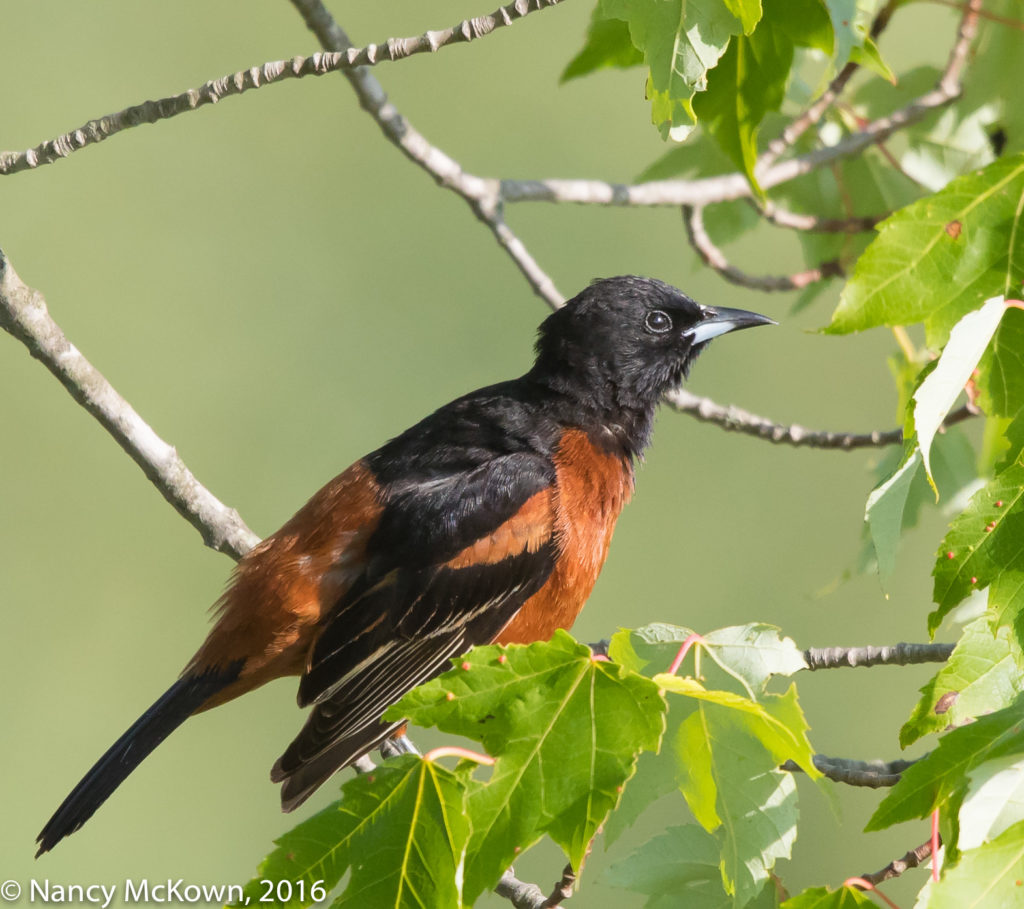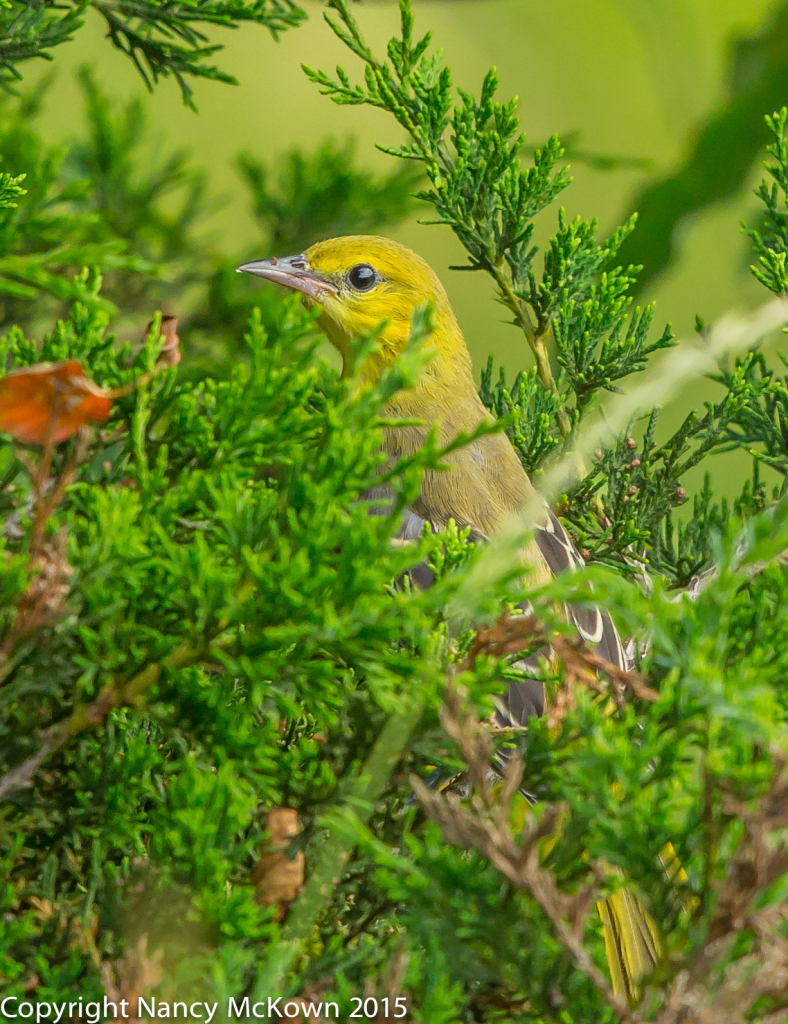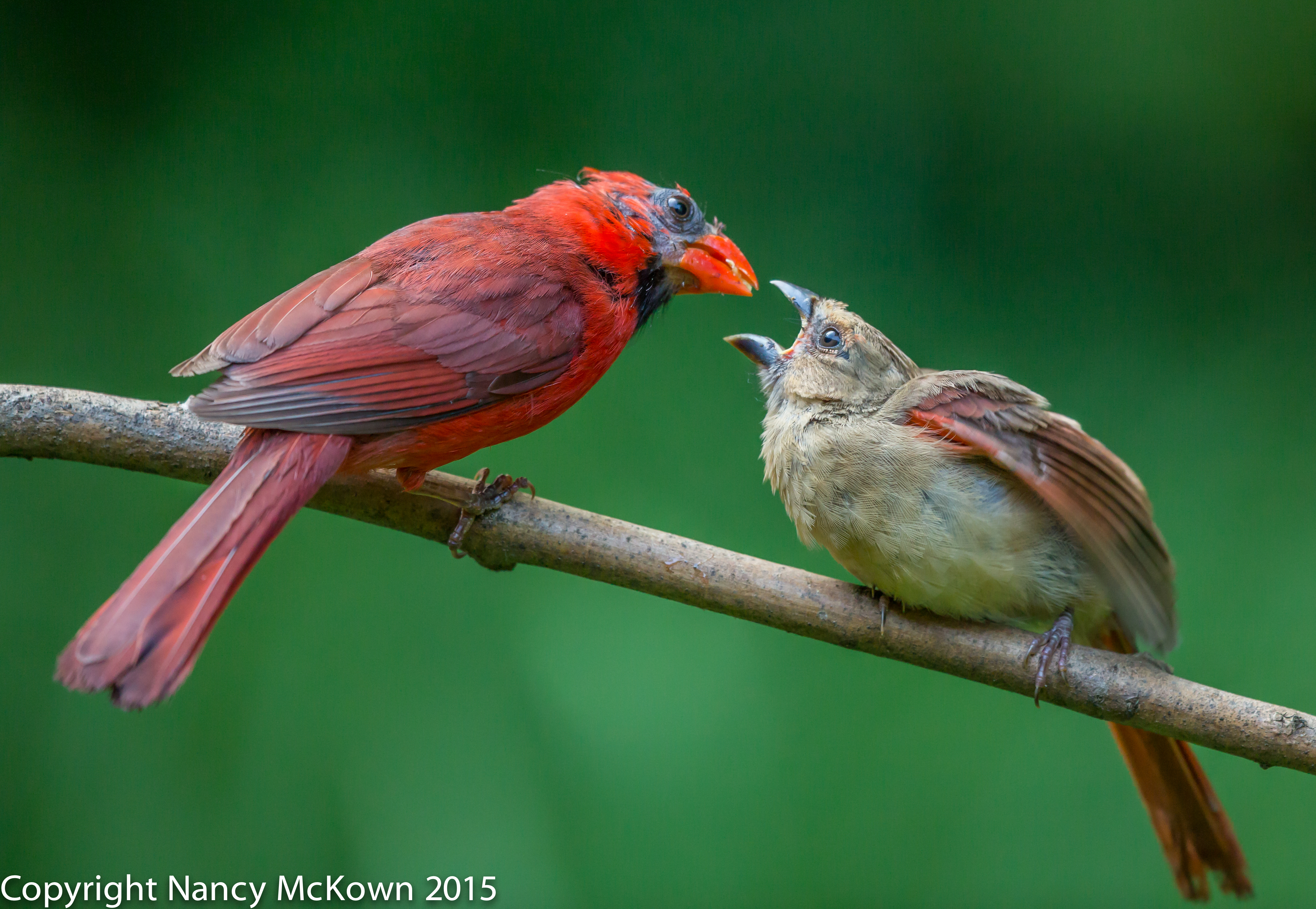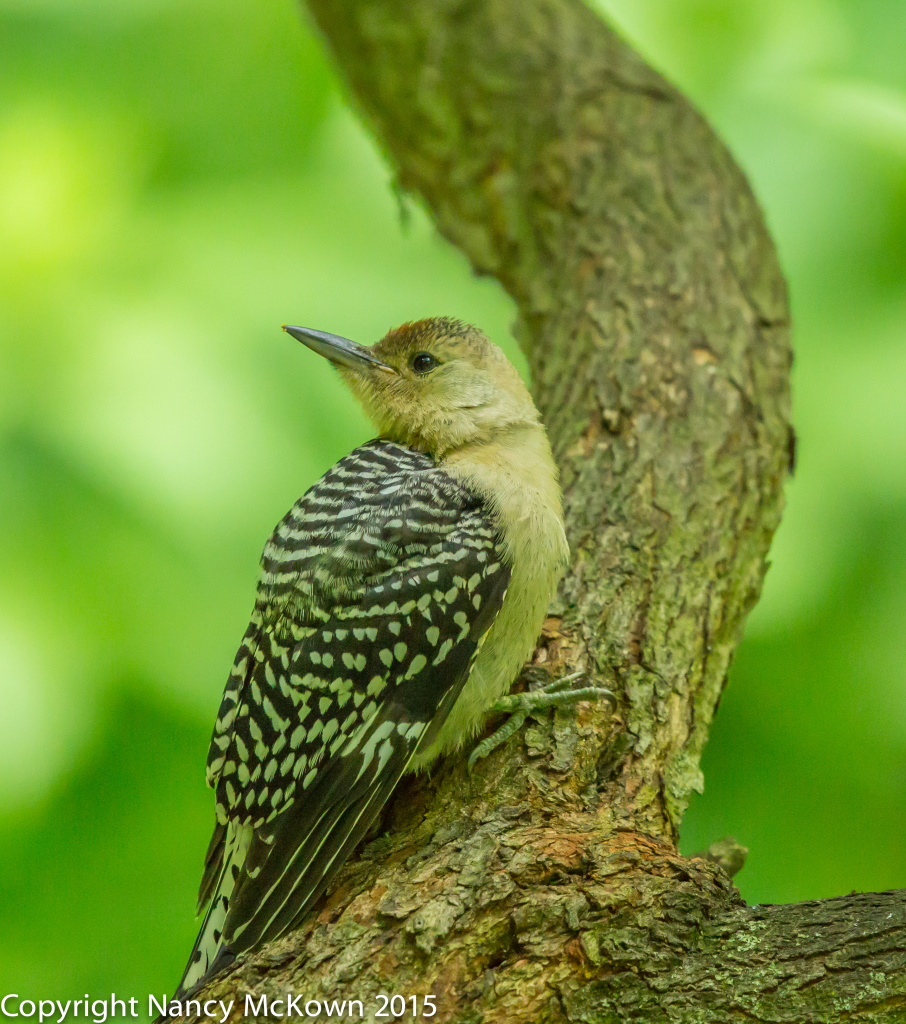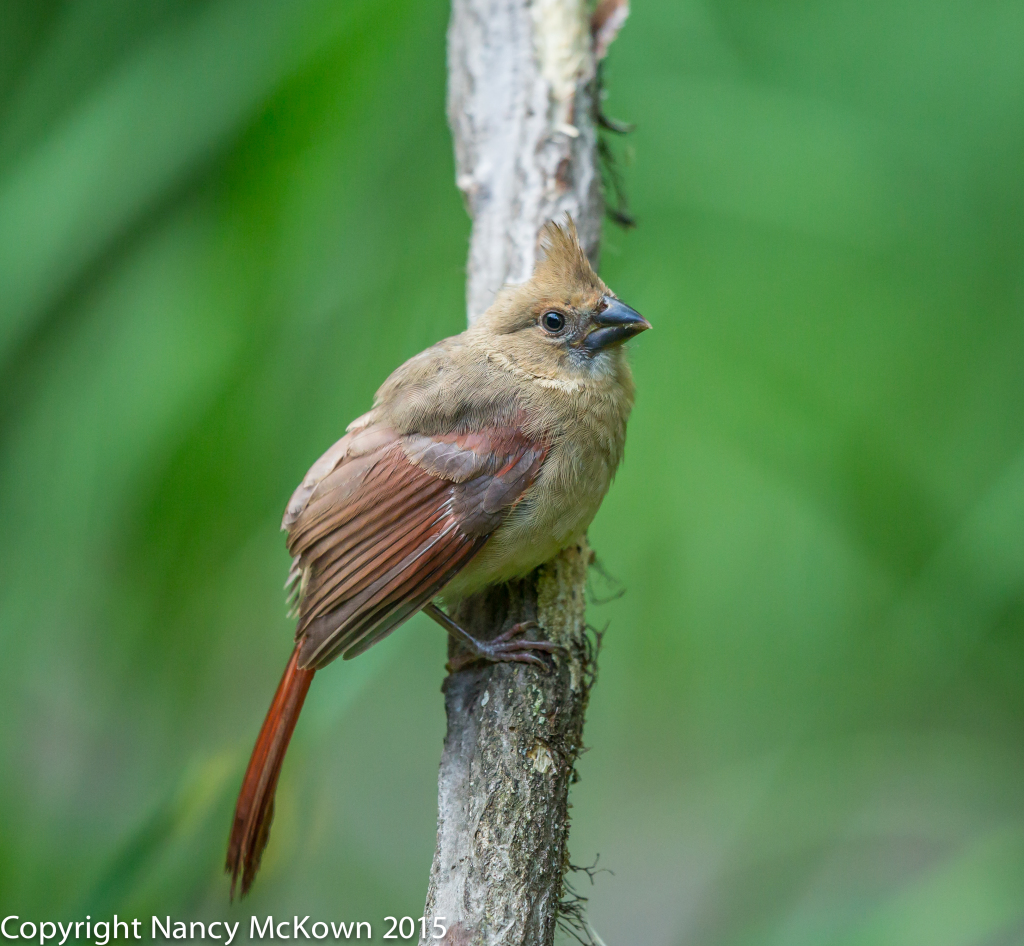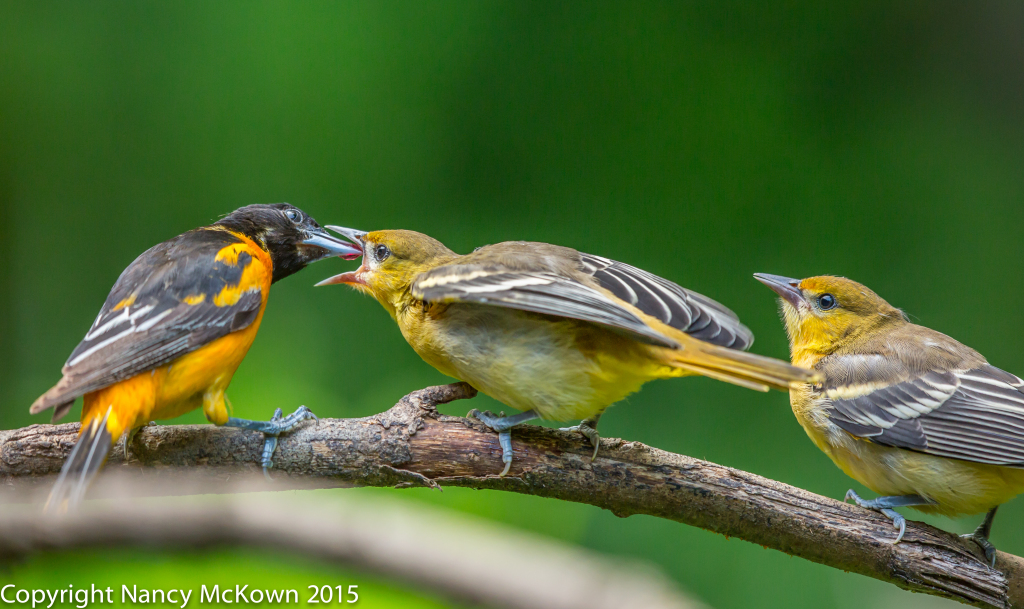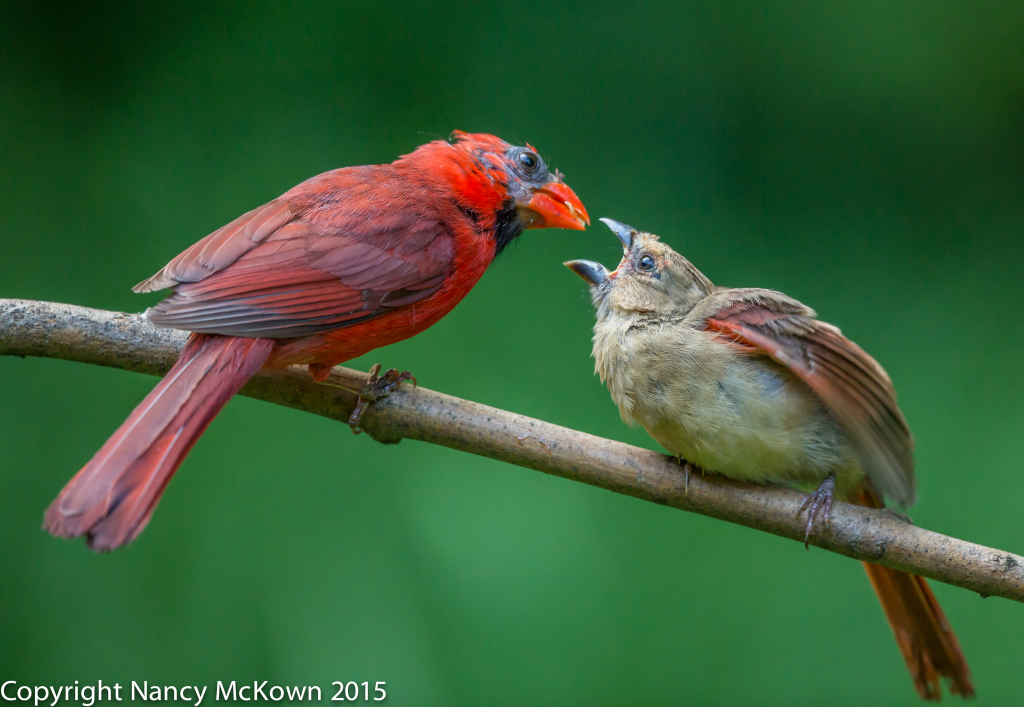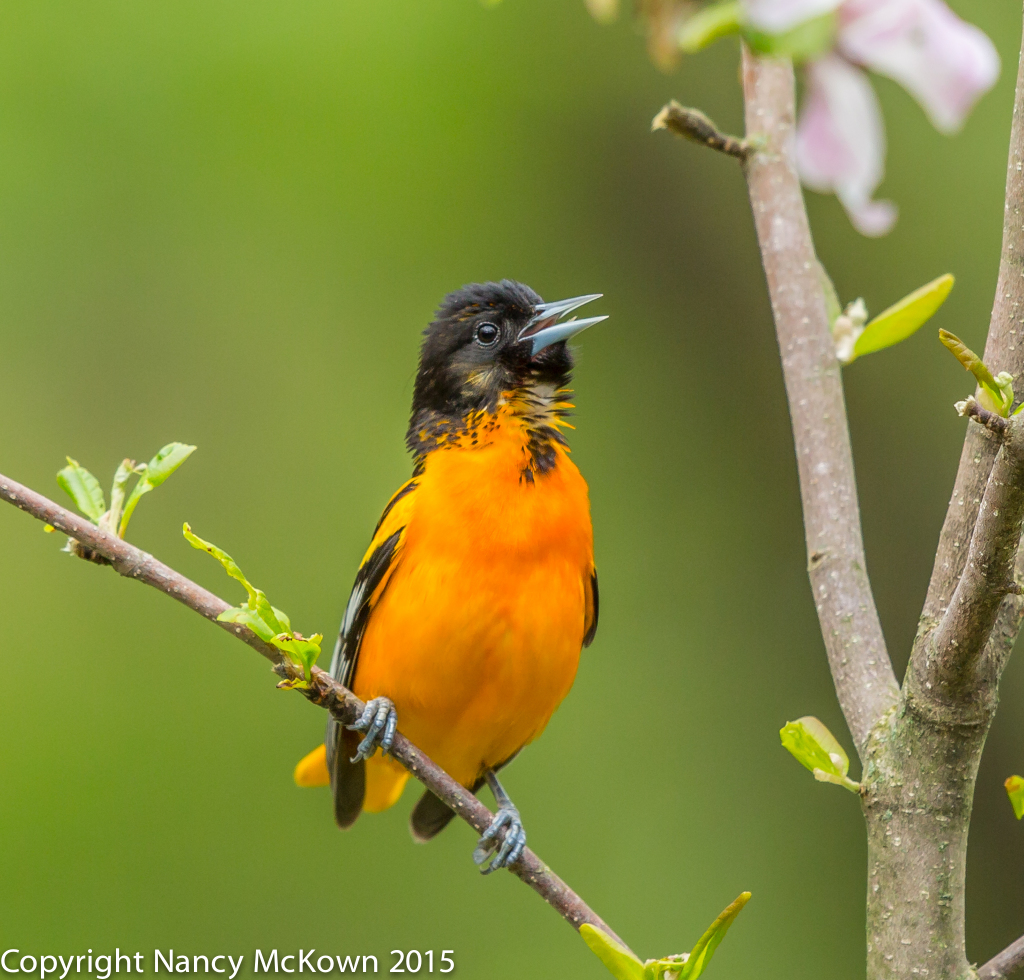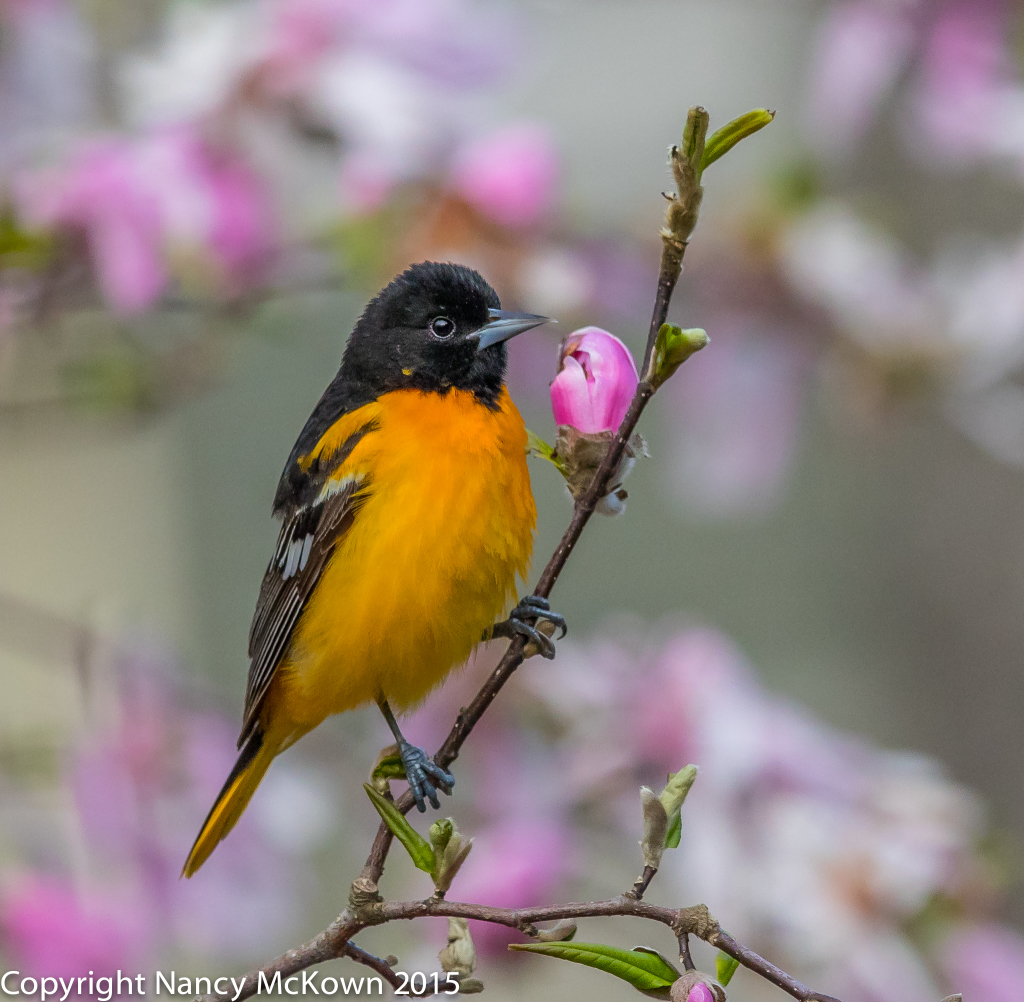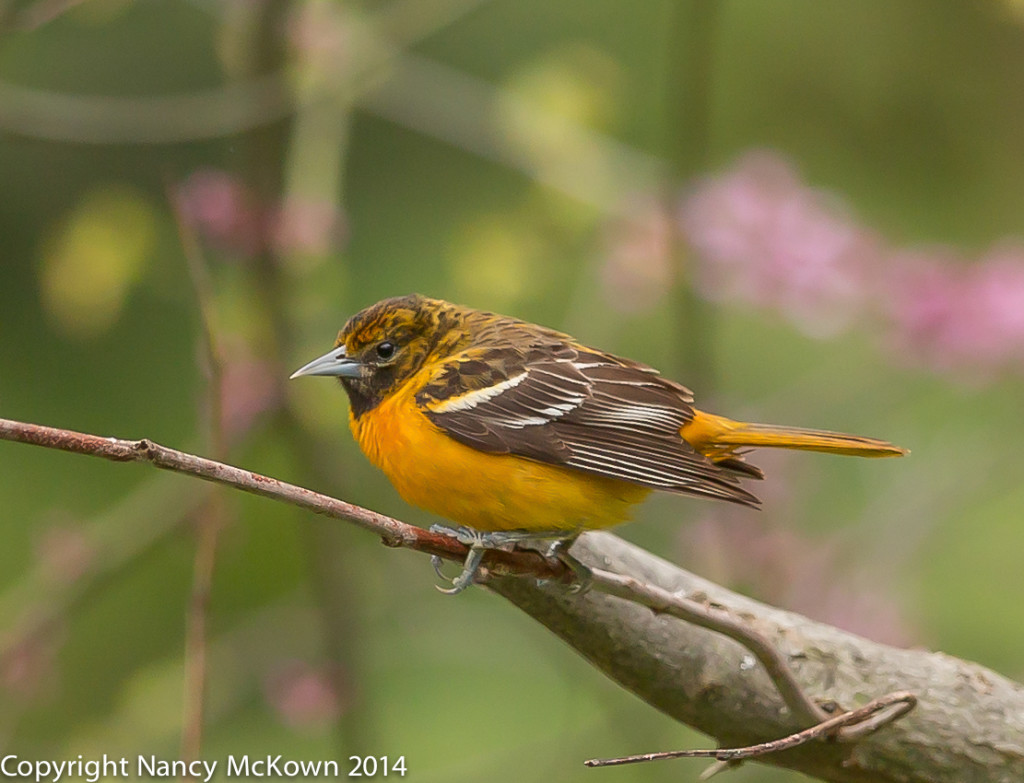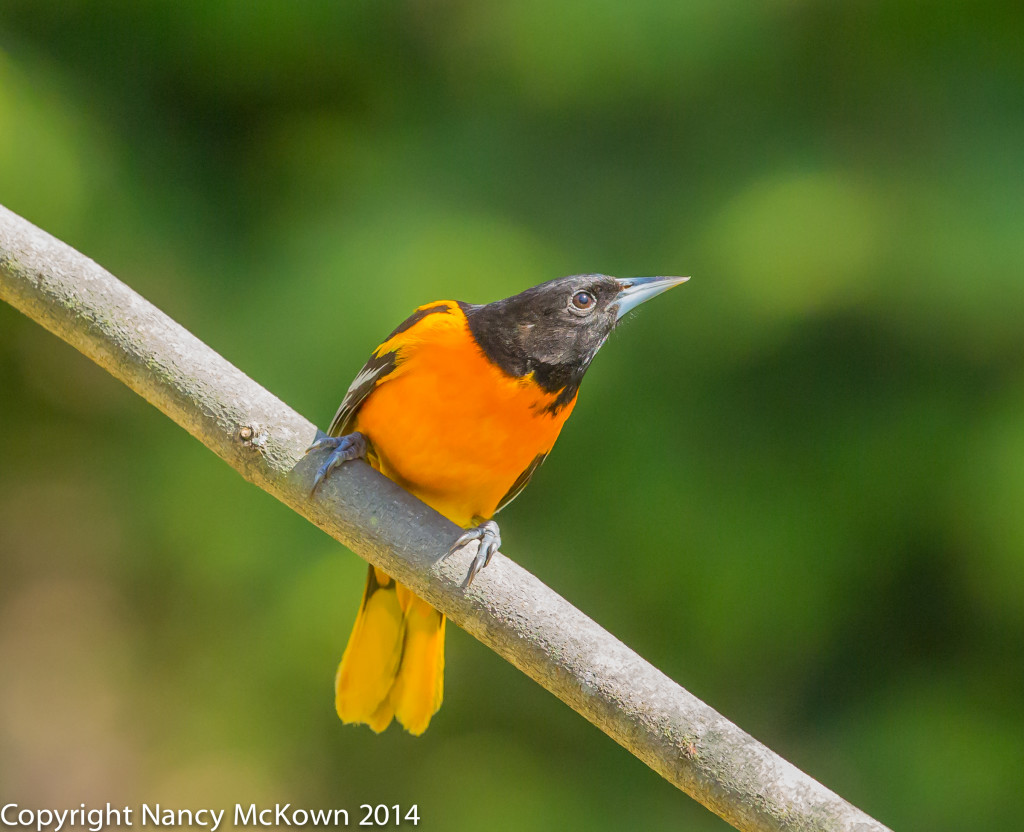When the Wind Blows, the Cradle Will Rock
At least, the Baltimore Orioles’ nesting cradles will rock.
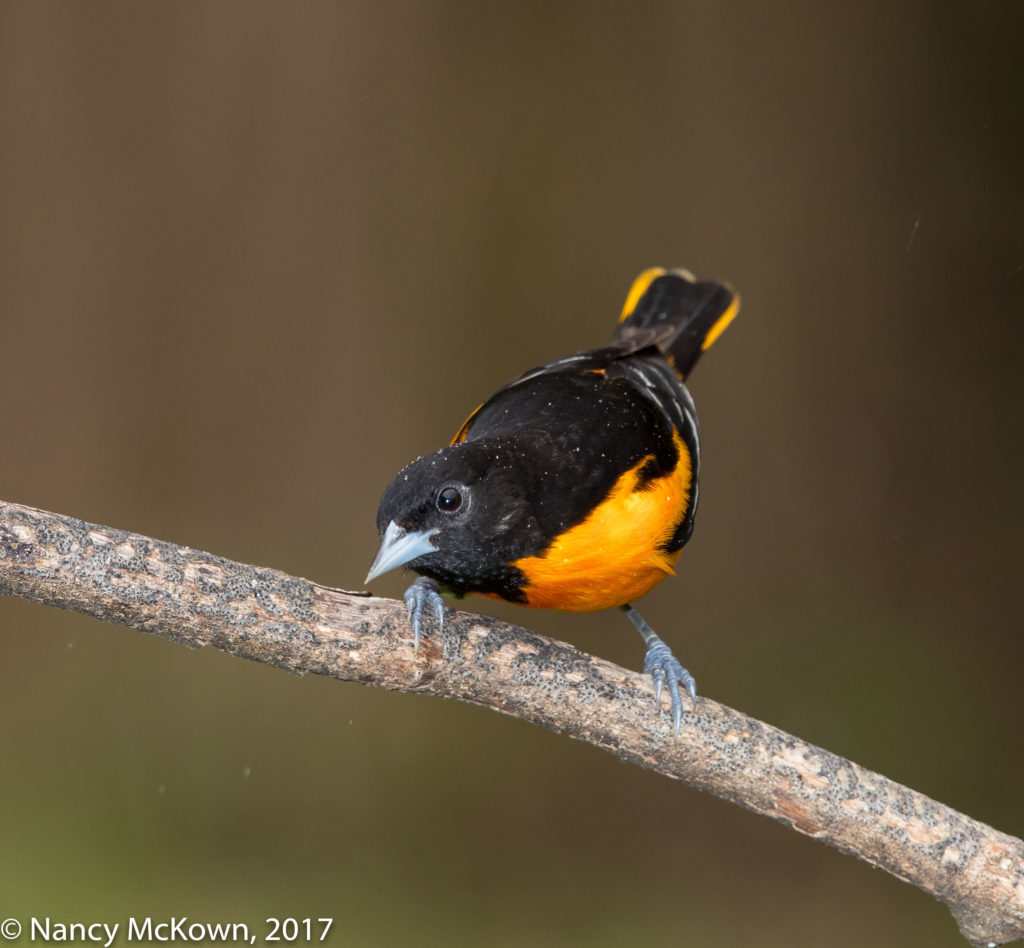
ISO400; f/9; 1/250 Second
Nest Building
Watching the Spring courtship and nesting rituals of birds is always invigorating. One of the most conspicuous performances is staged by the blazing yellow and orange Baltimore Orioles. The males display their finery and sing their hearts out in the usual way and pretty soon the females are busy weaving nests made of grass, ferns, leaves, hair, and twine, with feathers for the inner lining. She stitches these building materials together in tangles and knots, using the longest fibers to hang the nest from the outer end of a concealed tree branch. These sock-like hanging nests sway with the wind, but are only really noticeable in the Fall after the tree leaves have dropped. (NOTE: Each Spring I spread a few dozen short pieces of yarn about the yard, in the basement window wells and near the foot paths, hoping the birds will incorporate them into their nests. It disappears…. but I’ve never seen these fibers carried by any bird nor incorporated into a nest.)
The Disney Version
Last winter, we spied an Eastern Screech Owl in the owl house we erected 3 years earlier. How exciting, we thought. Perhaps he is exploring nesting opportunities, hoping to snatch a space to house a future family. After 3 weeks, the owl was gone and we haven’t seen him since.
Time to change my mental model – the wildly inaccurate Disney version of birds sleeping with their families in the nests they find or build.
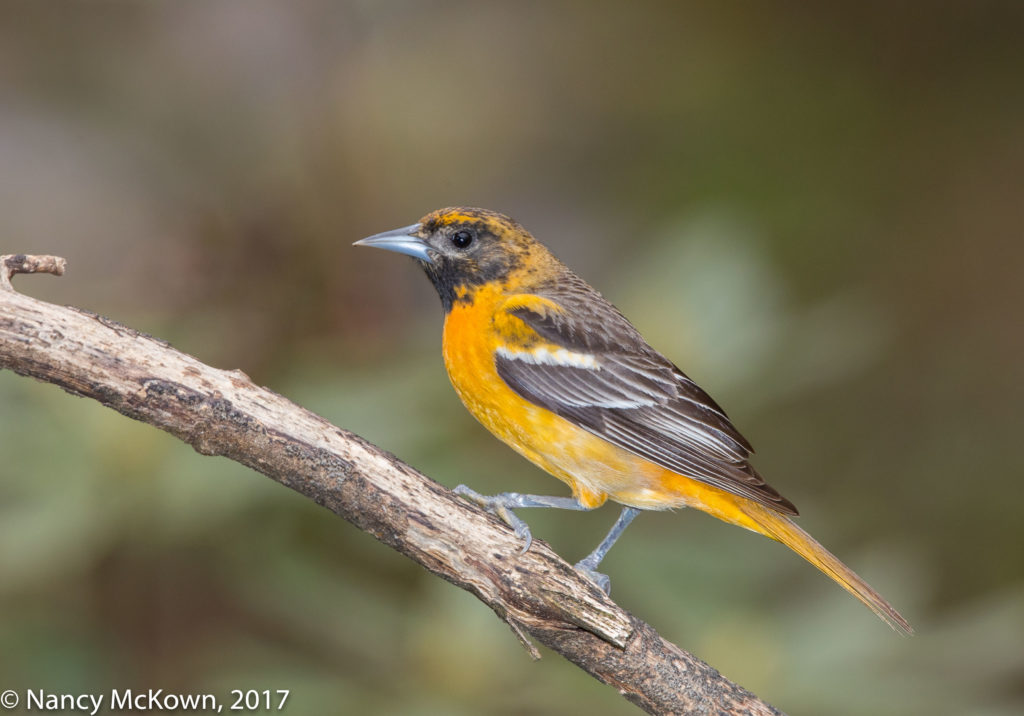
ISO400; f/9; 1/250 Second
Nesting is Different than Roosting
Nests are not homes for birds nor are they a place to rest or sleep. Birds who build nests build them to be temporary. They are often a sagging, parasite filled poopy mess after raising one or more broods.
Roosting simply means: “A place where winged animals, especially birds or bats, rest or sleep. 2. A place for temporary rest or sleep”. Birds use nests seasonally as a place to incubate their eggs and to hide, protect and nurture their young. Once the fledgings have flown the nest, the parents typically abandon them too.
Roosting Places
At night, most birds need a safe place away from roaming nocturnal predators. Some bird species crowd together communally for protection and warmth, while others sleep in secret isolation in some hidey hole, cliff, cavity, porch, barn, bucket, storage container, marshy lowland or high tree top.
Birds who stick around during the day must find places to settle down out of harm’s way for the night. Every time we add to a pile of dense vegetative debris, plant an evergreen, or erect a protective shelter, we are setting up safe places for bird roosting. After all, unlike nesting, sleeping is an essential, nightly, all season behavior.
To attract tired birds, roosting box designs should have the following characteristics:
- Heat conservation (especially in the winter)
- Plenty of room and perching spaces within to accommodate more than one bird
- Cleanable design, with space on the bottom for wood chips
- Multiple exits to escape predators
- Entrance/exit holes that are designed to accommodate and protect certain sized birds (so the big and aggressive birds don’t hog all the good spots).
Not too much to ask. We’ve started searching on-line for roosting boxes, especially for the year round birds.
NOTE: This Spring the owl house is empty. The Eastern Screech Owl we observed last winter obviously a found better place to nest….. away from the prying eye of the camera.

